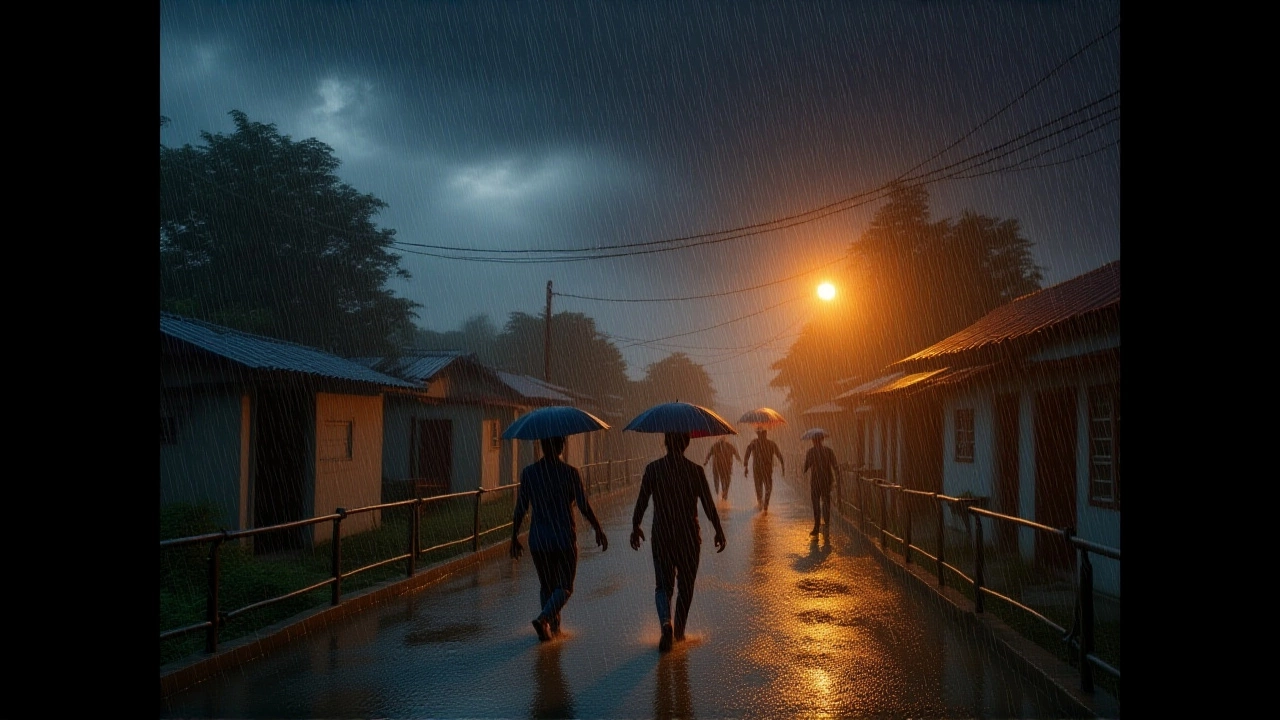Heavy Rainfall: Understanding the Force Behind the Downpour
When dealing with heavy rainfall, a sustained period of intense precipitation that exceeds normal levels for a region. Also known as intense precipitation, it can trigger immediate challenges for communities, infrastructure, and the environment. Flood risk, the probability and potential severity of flood events caused by excess water rises sharply whenever heavy rainfall hits, especially in low‑lying or poorly drained areas. At the same time, Monsoon, a seasonal wind pattern that brings large amounts of rain to certain regions acts as a natural amplifier, delivering months of rain that can overwhelm rivers and reservoirs. The broader backdrop of Climate change, long‑term shifts in temperature and weather patterns driven by greenhouse gas emissions is reshaping how often and how severe these downpours become, while advances in Weather forecasting, the scientific prediction of atmospheric conditions using models and observations give us a better chance to brace for impact.
Heavy rainfall demands a clear understanding of three core aspects: the physical triggers that make it happen, the downstream effects it creates, and the tools we have to mitigate those effects. First, look at triggers—rapidly rising temperatures, moisture‑laden air masses, and atmospheric instability all combine to dump large water volumes in a short window. When those conditions line up over river basins or coastal plains, the result is often a perfect storm for flash floods. Second, the effects can be immediate: road washouts, landslides, and power outages. Over time, repeated heavy rainfall can erode soil, degrade water quality, and strain urban drainage systems. Finally, mitigation hinges on accurate weather forecasting and proactive planning. Early warnings enable authorities to close vulnerable roads, activate emergency shelters, and coordinate rescue teams before waters rise too high. Communities that invest in robust drainage, flood‑plain zoning, and public education see far fewer casualties when a deluge strikes.
Why This Collection Matters
Below you’ll find a mixed bag of stories, analyses, and tips that all tie back to heavy rainfall in one way or another. From a heated cricket match that unfolded under a sudden downpour to discussions about how climate shifts are rewriting monsoon calendars, each piece adds a layer to the bigger picture. You’ll also see practical advice on preparing homes for flood risk, the role of social media in spreading real‑time alerts, and even a look at how journalists cover extreme weather events. Whether you’re a casual reader trying to make sense of a soggy day or a planner looking for actionable insights, this roundup gives you a front‑row seat to the challenges and solutions surrounding heavy rainfall.
So, as you scroll through the articles, keep in mind the three pillars we just touched on—cause, impact, and response. The posts will illustrate how each pillar plays out across sports, culture, technology, and environment, showing that the ripple effects of a single rainstorm can reach far beyond wet streets. Dive in and discover how experts, athletes, and everyday folks cope when the sky opens up.
Heavy Rainfall Triggers Fatalities and Floods Across Bihar, Darjeeling, and Nepal
Heavy rainfall on Oct 5, 2025 triggers deaths, floods and landslides across Bihar, Darjeeling and Nepal, prompting emergency relief and warnings from officials.

 Cricket
Cricket